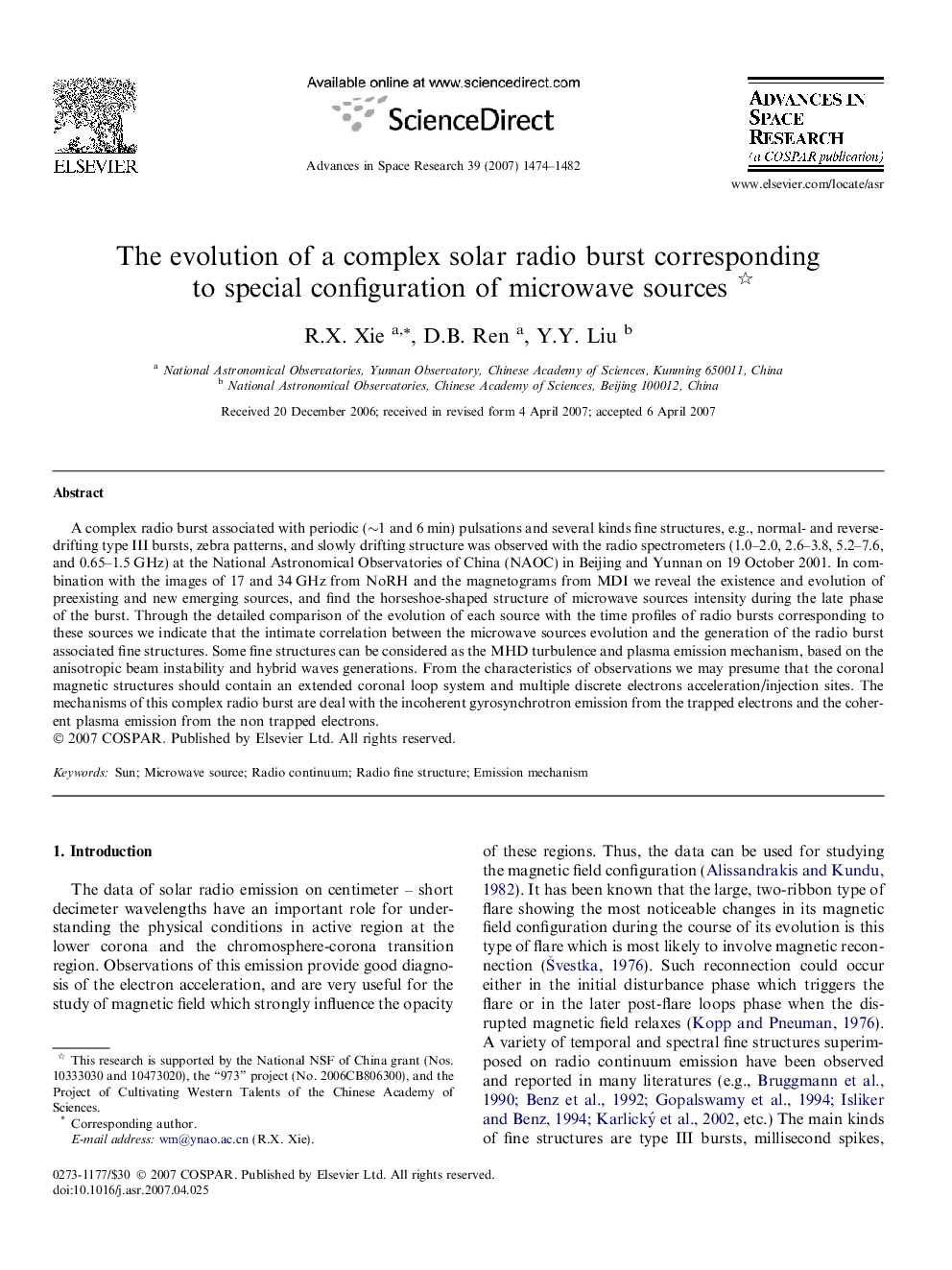| Article ID | Journal | Published Year | Pages | File Type |
|---|---|---|---|---|
| 1768979 | Advances in Space Research | 2007 | 9 Pages |
Abstract
A complex radio burst associated with periodic (â¼1 and 6Â min) pulsations and several kinds fine structures, e.g., normal- and reverse-drifting type III bursts, zebra patterns, and slowly drifting structure was observed with the radio spectrometers (1.0-2.0, 2.6-3.8, 5.2-7.6, and 0.65-1.5Â GHz) at the National Astronomical Observatories of China (NAOC) in Beijing and Yunnan on 19 October 2001. In combination with the images of 17 and 34Â GHz from NoRH and the magnetograms from MDI we reveal the existence and evolution of preexisting and new emerging sources, and find the horseshoe-shaped structure of microwave sources intensity during the late phase of the burst. Through the detailed comparison of the evolution of each source with the time profiles of radio bursts corresponding to these sources we indicate that the intimate correlation between the microwave sources evolution and the generation of the radio burst associated fine structures. Some fine structures can be considered as the MHD turbulence and plasma emission mechanism, based on the anisotropic beam instability and hybrid waves generations. From the characteristics of observations we may presume that the coronal magnetic structures should contain an extended coronal loop system and multiple discrete electrons acceleration/injection sites. The mechanisms of this complex radio burst are deal with the incoherent gyrosynchrotron emission from the trapped electrons and the coherent plasma emission from the non trapped electrons.
Keywords
Related Topics
Physical Sciences and Engineering
Earth and Planetary Sciences
Space and Planetary Science
Authors
R.X. Xie, D.B. Ren, Y.Y. Liu,
